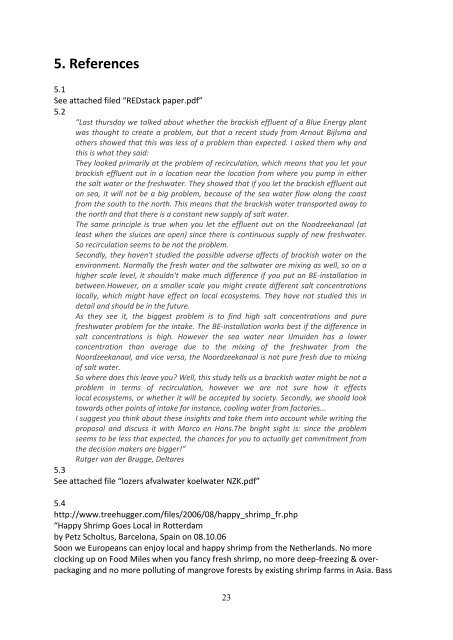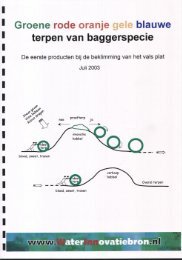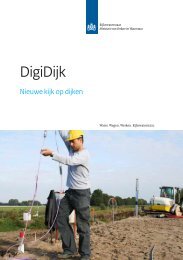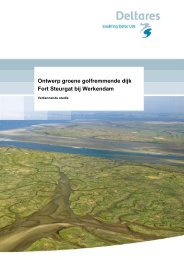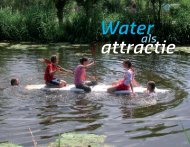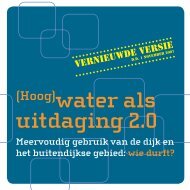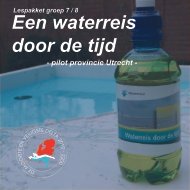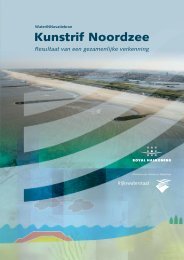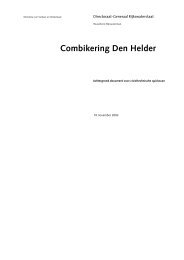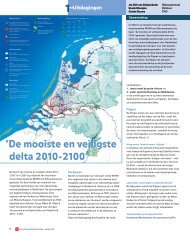Creating opportunities to adapt to climate change through innovative ...
Creating opportunities to adapt to climate change through innovative ...
Creating opportunities to adapt to climate change through innovative ...
Create successful ePaper yourself
Turn your PDF publications into a flip-book with our unique Google optimized e-Paper software.
5. References5.1See attached filed “REDstack paper.pdf”5.2“Last thursday we talked about whether the brackish effluent of a Blue Energy plantwas thought <strong>to</strong> create a problem, but that a recent study from Arnout Bijlsma andothers showed that this was less of a problem than expected. I asked them why andthis is what they said:They looked primarily at the problem of recirculation, which means that you let yourbrackish effluent out in a location near the location from where you pump in eitherthe salt water or the freshwater. They showed that if you let the brackish effluent ou<strong>to</strong>n sea, it will not be a big problem, because of the sea water flow along the coastfrom the south <strong>to</strong> the north. This means that the brackish water transported away <strong>to</strong>the north and that there is a constant new supply of salt water.The same principle is true when you let the effluent out on the Noodzeekanaal (atleast when the sluices are open) since there is continuous supply of new freshwater.So recirculation seems <strong>to</strong> be not the problem.Secondly, they haven't studied the possible adverse affects of brackish water on theenvironment. Normally the fresh water and the saltwater are mixing as well, so on ahigher scale level, it shouldn't make much difference if you put an BE-installation inbetween.However, on a smaller scale you might create different salt concentrationslocally, which might have effect on local ecosystems. They have not studied this indetail and should be in the future.As they see it, the biggest problem is <strong>to</strong> find high salt concentrations and purefreshwater problem for the intake. The BE-installation works best if the difference insalt concentrations is high. However the sea water near IJmuiden has a lowerconcentration than average due <strong>to</strong> the mixing of the freshwater from theNoordzeekanaal, and vice versa, the Noordzeekanaal is not pure fresh due <strong>to</strong> mixingof salt water.So where does this leave you? Well, this study tells us a brackish water might be not aproblem in terms of recirculation, however we are not sure how it effectslocal ecosystems, or whether it will be accepted by society. Secondly, we shoold look<strong>to</strong>wards other points of intake for instance, cooling water from fac<strong>to</strong>ries...I suggest you think about these insights and take them in<strong>to</strong> account while writing theproposal and discuss it with Marco en Hans.The bright sight is: since the problemseems <strong>to</strong> be less that expected, the chances for you <strong>to</strong> actually get commitment fromthe decision makers are bigger!”Rutger van der Brugge, Deltares5.3See attached file “lozers afvalwater koelwater NZK.pdf”5.4http://www.treehugger.com/files/2006/08/happy_shrimp_fr.php“Happy Shrimp Goes Local in Rotterdamby Petz Scholtus, Barcelona, Spain on 08.10.06Soon we Europeans can enjoy local and happy shrimp from the Netherlands. No moreclocking up on Food Miles when you fancy fresh shrimp, no more deep-freezing & overpackagingand no more polluting of mangrove forests by existing shrimp farms in Asia. Bass23


